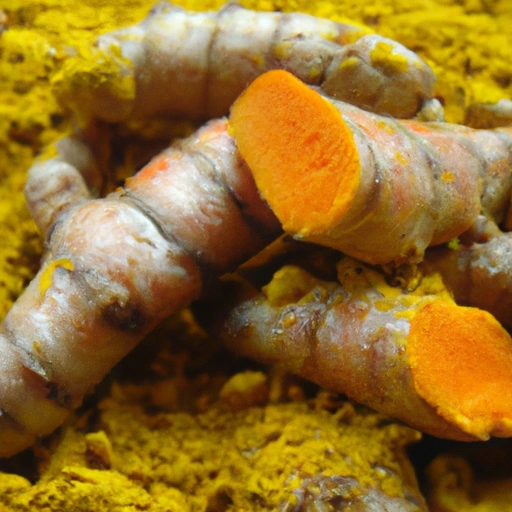Turmeric
Description

Turmeric is a golden-yellow spice often revered as much for its health benefits as for its distinctive flavor. Derived from the root of the Curcuma longa plant, it is a staple ingredient in many Asian, Middle Eastern, and African cuisines. Turmeric is known for its warm, bitter taste and is frequently used to color or flavor curry powders, mustards, butters, and cheeses. It contains a powerful compound called curcumin, which is attributed with anti-inflammatory and antioxidant properties.
Common uses
Common uses of turmeric include coloring and flavoring in culinary applications, dyeing fabrics, and as a component in ceremonial and medicinal preparations.
Nutritional value
Calories
One tablespoon (6.8 g) of ground turmeric contains approximately 24 kcal (100 kJ).
Protein
Each tablespoon of turmeric provides roughly 0.5 grams of protein.
Fat
Turmeric contains about 0.7 grams of fat per tablespoon.
Carbohydrates
The carbohydrate content in a tablespoon of turmeric is approximately 4.4 grams, which includes a small amount of dietary fiber.
Vitamins
Turmeric is a source of several vitamins, including B vitamins, particularly B6 (pyridoxine), and small amounts of vitamin C.
Minerals
It also contains minerals like iron (2.8 mg), manganese (0.5 mg), and potassium (170 mg), all measured per tablespoon.
Health benefits
The curcumin in turmeric is believed to reduce inflammation, which is thought to benefit conditions such as arthritis and heart disease. Its antioxidant properties may help fight free radicals in the body, potentially reducing the risk of cancer and other diseases. Turmeric may also aid in digestion and has been studied for its potential to improve cognitive function and reduce symptoms of depression.
Potential risks
While turmeric is generally considered safe for most people, excessive consumption can lead to stomach upset, nausea, dizziness, or diarrhea. Those with gallbladder disease should avoid turmeric as it may worsen the condition. It may also interact with certain medications, such as blood thinners and diabetes drugs. Pregnant and breastfeeding women should consult a healthcare provider before increasing turmeric consumption.
Common recipes
Turmeric is a key ingredient in curry powders and is used in a multitude of recipes such as curries, soups, rice dishes, and marinades. It is also used to make golden milk, a popular health beverage.
Cooking methods
It can be used fresh, dried, or as a powder and is often sautéed in oil to release its flavors. It can withstand long cooking times, making it suitable for slow-cooked dishes.
Pairing with other ingredients
Turmeric pairs well with ingredients like ginger, garlic, cumin, and coriander. It complements vegetables such as cauliflower, potatoes, and root vegetables, as well as lentils and beans.
Summary
Turmeric is a multifaceted spice with a rich history and a variety of uses. Its health benefits and striking color make it a favorite in kitchens and medicine cabinets worldwide. Whether you're exploring new recipes or seeking natural remedies, turmeric is a versatile and beneficial addition to any pantry.